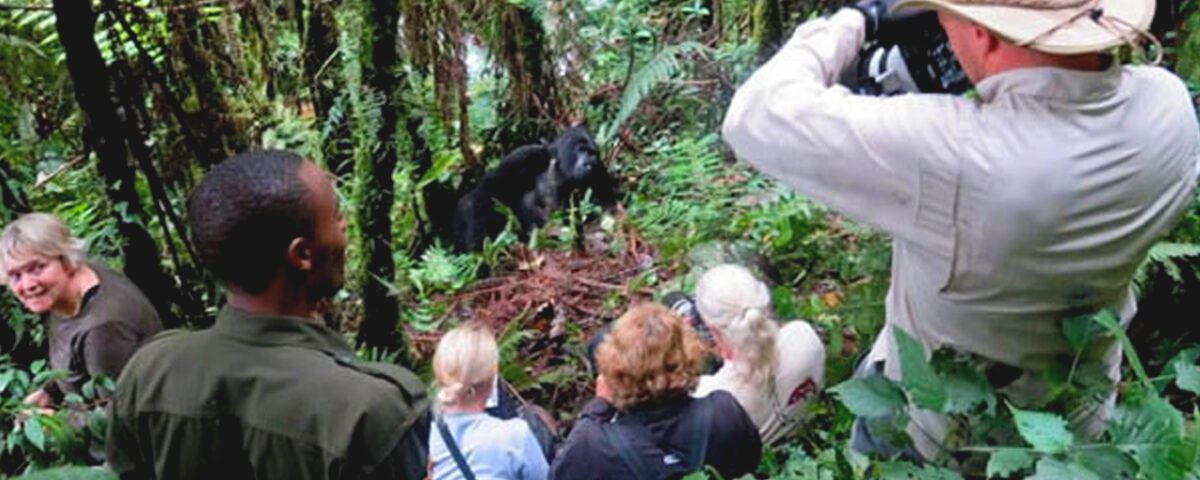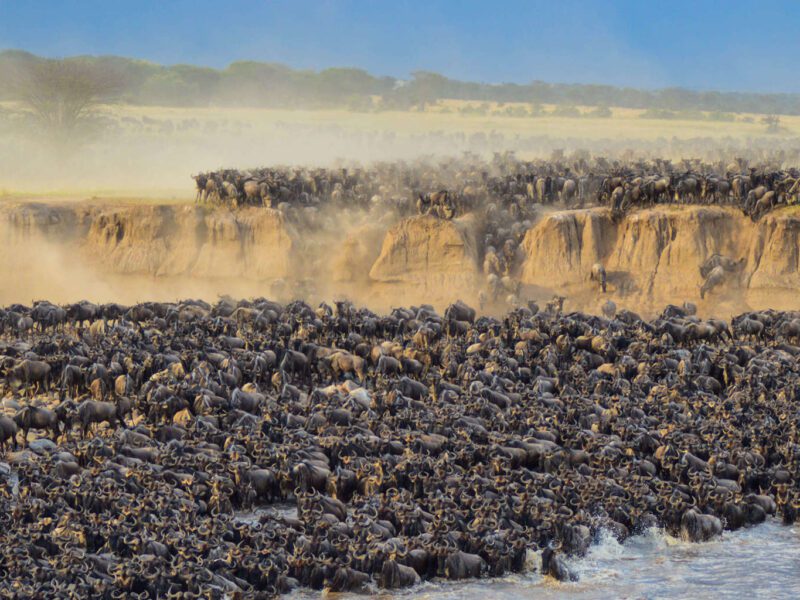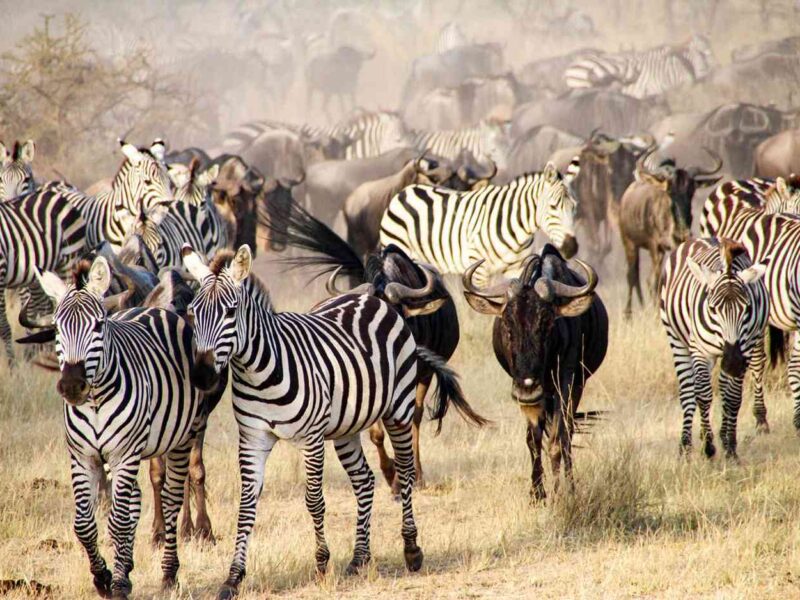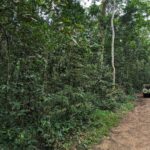
1-Day Uganda Gorilla Trekking Safari from Kigali City
September 21, 2024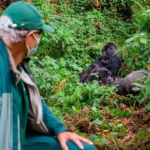
How Do I Book Gorilla Trekking in Rwanda?
November 14, 2024Are You Guaranteed to See Gorillas in Uganda?
When planning an adventure to Uganda, the prospect of trekking into the dense forests of Bwindi Impenetrable National Park or Mgahinga Gorilla National Park to see the majestic mountain gorillas is one of the most sought-after experiences. However, one common question that arises is: Are you guaranteed to see gorillas in Uganda? While the allure of encountering these magnificent creatures is undeniable, the answer is not as simple as a resounding yes. Gorilla trekking in Uganda offers a spectacular wildlife experience, but like all wildlife adventures, it comes with certain uncertainties. In this detailed guide, we’ll explore the likelihood of seeing gorillas, the factors influencing your chances, and how you can ensure the best possible outcome on your trek.
Understanding Gorilla Trekking in Uganda
Uganda is home to over half of the world’s remaining mountain gorillas, and trekking to see these incredible creatures in the wild has become one of Africa’s most popular wildlife activities. The majority of mountain gorillas in Uganda reside in Bwindi Impenetrable National Park and Mgahinga Gorilla National Park, where trekking takes place throughout the year. The experience allows you to venture into the forest with rangers and guides, track a family of gorillas, and observe them up close for an unforgettable hour.
However, despite the abundance of gorillas, gorilla trekking does not guarantee a sighting every time. It is important to understand the nature of the trek and the challenges involved to get the most out of your gorilla adventure.
Gorilla Habituation vs. Gorilla Trekking
First, let’s distinguish between the two main types of gorilla experiences you can book:
- Gorilla Trekking – This is the classic experience where visitors trek through the forest to find a family of gorillas. Once located, trekkers are allowed one hour to observe them. Gorilla trekking permits are more common, and there are multiple trekking sectors available in Bwindi and Mgahinga.
- Gorilla Habituation Experience – Available only in the Rushaga sector of Bwindi Impenetrable National Park, this experience allows trekkers to spend four hours with a gorilla family as they become accustomed to human presence. The gorilla habituation experience is a more immersive and unique opportunity to engage with the gorillas.

Best Safari Packages
Trekking Rates
The cost of a gorilla trekking permit can vary depending on the type of experience and the nationality of the traveler. Here’s a quick breakdown:
| Permit Type | Foreign Non-Residents | Foreign Residents | Africans | East African Citizens |
| Gorilla Trekking Permit | $800 per person | $700 per person | $500 per person | 300,000 UGX per person |
| Gorilla Habituation Permit | $1,500 per person | $1,000 per person | $1,000 per person | 750,000 UGX per person |
Factors Affecting the Chances of Seeing Gorillas
While the odds of spotting gorillas on a trek are relatively high, several factors can influence your chances of a successful sighting. These factors include weather conditions, the gorillas’ movement patterns, the difficulty of the terrain, and the expertise of the guides and rangers. Let’s break them down:
The Gorillas’ Movements
Gorillas, like all wild animals, are free to move within their natural habitat. While some days may offer easy sightings, other days may involve more challenging treks. Gorillas are constantly on the move—they forage for food, interact with each other, and may travel long distances. In some cases, gorillas may choose to move to more remote areas within the forest, which can make the trek more difficult. The park rangers are experts in tracking the gorillas and have radio communication with other rangers, so they can usually lead trekkers to the right locations.
The Terrain and Weather
The terrain in Uganda’s gorilla trekking areas can be quite challenging. The Bwindi Impenetrable Forest, for example, is known for its steep slopes, dense vegetation, and unpredictable weather. Rain is a common occurrence, even during the dry season, which can make the paths muddy and difficult to navigate. While these conditions add to the excitement of the trek, they can also impact the time it takes to find the gorillas.
Guides and rangers are trained to deal with the various challenges of the environment and will equip you with the proper guidance and gear (such as waterproof jackets, sturdy shoes, and walking sticks) to help navigate the difficult terrain. However, trekking in such an environment can add unpredictability to the overall experience, and the weather could play a significant role in your chances of a successful sighting.
The Time of Year
The best time to trek for gorillas in Uganda is during the dry season, which typically lasts from June to September and December to February. The dry season offers better trekking conditions, with less rain, drier paths, and fewer obstacles in the forest. However, this is also the peak season for gorilla trekking, and permits tend to sell out quickly. If you trek during the wet season (March to May and October to November), the weather can make the trek more challenging, and you may need to prepare for muddy paths and more difficult hiking conditions.
The Experience of Your Guide
The expertise of your guide and ranger is critical when it comes to ensuring a successful trek. Rangers and guides have an intimate understanding of the gorillas’ movements, habits, and locations, making them an essential part of the experience. They are trained trackers who use a combination of signs (like footprints, nests, and droppings) to locate the gorillas. While they cannot guarantee that you will find the gorillas immediately, their knowledge of the terrain and the gorillas’ behavior will significantly improve your chances of a sighting.
Group Size and Trek Difficulty
The group size for gorilla trekking is limited to 8 people per gorilla group. Smaller groups can often cover ground more easily and allow for more intimate interactions with the gorillas. However, the difficulty of the trek can vary depending on which sector you are trekking in and the location of the gorillas.
For example, in some parts of Bwindi, such as the Rushaga sector, the terrain is steeper, and the hike may take longer, which can affect the ease with which the gorillas can be located. Some sectors may have more accessible terrain, making trekking easier and quicker, but these sectors may also be more heavily trafficked, which can make it feel less intimate.
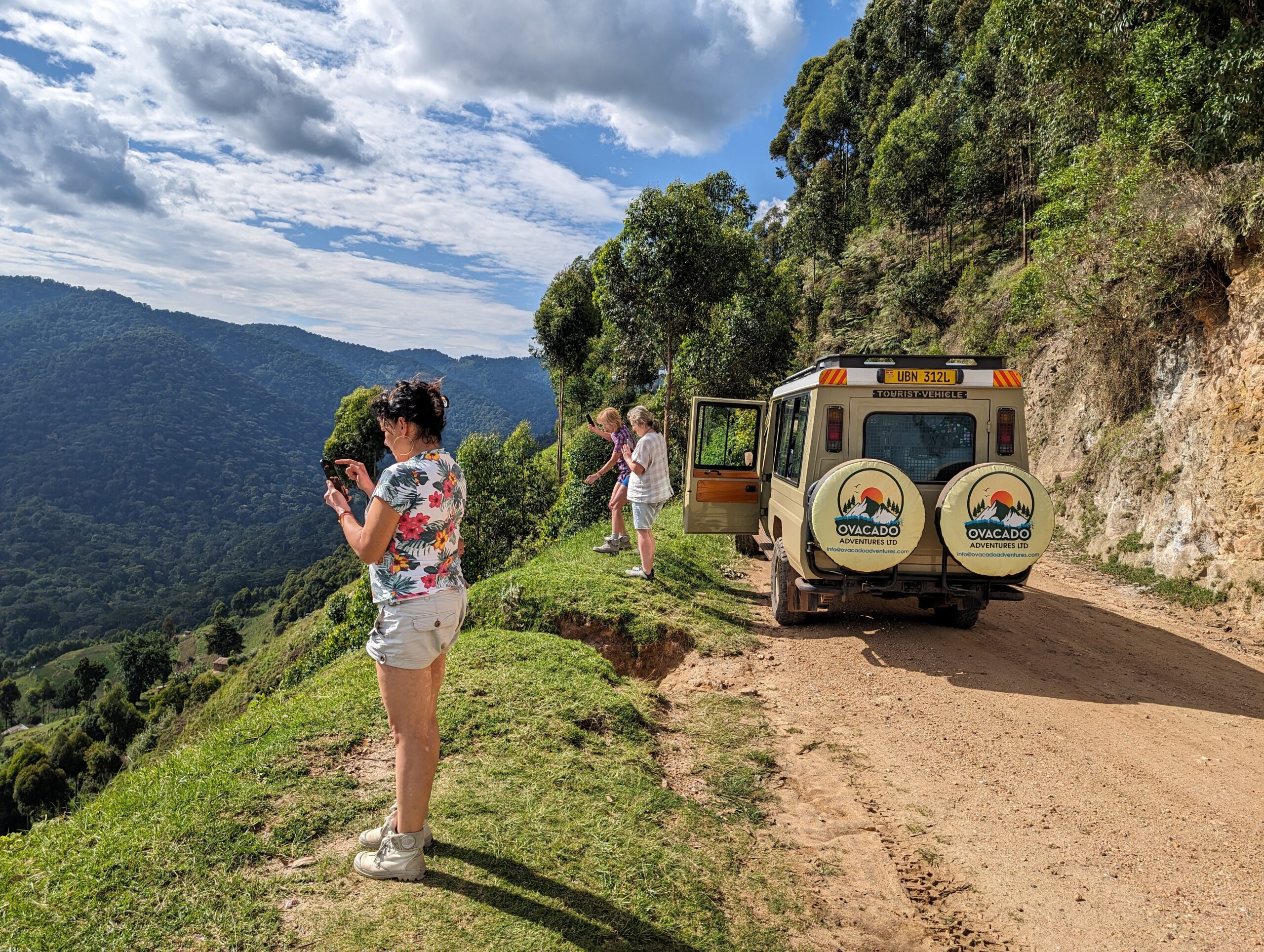
Gorilla Trekking in Bwindi
What Happens If You Don’t See Gorillas?
Despite the odds, there are occasions when trekkers may not see the gorillas during a trek. This can be a frustrating experience, especially considering the investment of time and money involved. However, it is essential to understand that this is a wildlife experience, and seeing gorillas in their natural habitat is not always guaranteed. If, after a full day of trekking, the rangers are unable to locate the gorillas, you may be able to trek again the next day at no additional cost (though this is subject to availability).
It’s important to approach gorilla trekking with realistic expectations. The experience is not about simply spotting the gorillas but about embracing the journey, the natural beauty of the forests, and the opportunity to learn from experienced guides.
Tips for Maximizing Your Chances of Seeing Gorillas
Here are a few tips that can improve your chances of seeing gorillas during your trek:
Choose the Right Season
As mentioned earlier, trekking in the dry season increases the likelihood of a successful trek. If you can, plan your trip between June and September or December and February for optimal conditions.
Hire a Porter
Hiring a porter to assist with your gear can make your trek more comfortable and allow you to focus on the task at hand. Porters are especially helpful in tough terrain and can help you maintain a steady pace.
Prepare Physically
Gorilla trekking can be physically demanding, especially in steep and slippery terrain. Prepare yourself by going on hikes and walks before your trek to build stamina and get comfortable with the type of terrain you’ll be encountering.
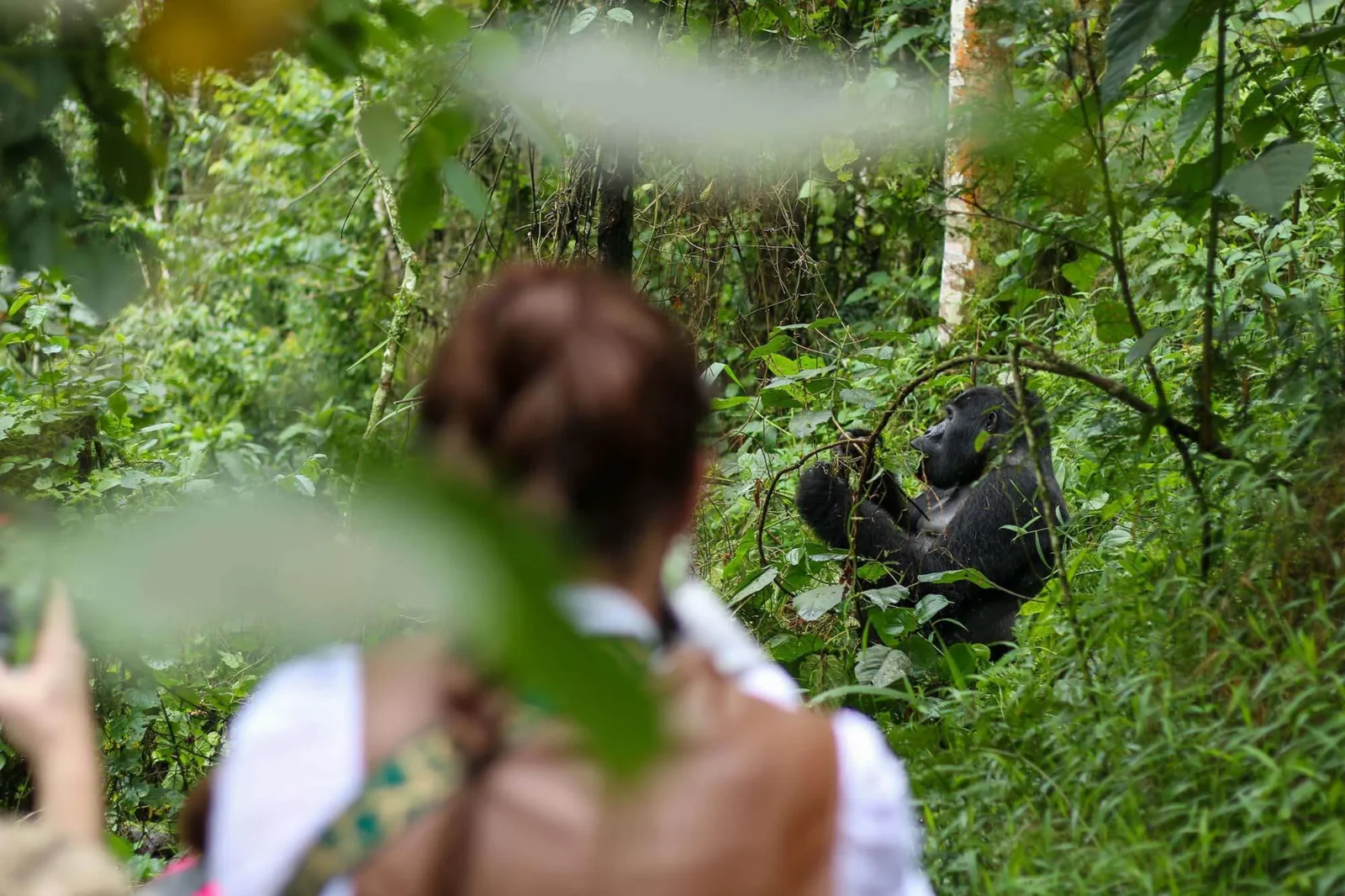
Are You Guaranteed to See Gorillas in Uganda
Stay Calm and Follow Instructions
Once you do encounter the gorillas, it’s essential to stay calm and follow the instructions of your guide. Maintain a safe distance and avoid any sudden movements or loud noises that could startle the gorillas.
Conclusion
Gorilla trekking in Uganda offers an incredible wildlife adventure that is the stuff of dreams. However, it’s important to remember that there are no guarantees when it comes to seeing gorillas. Factors such as weather conditions, the gorillas’ movements, and the difficulty of the terrain all play a role in the trek’s success. By understanding these factors, preparing accordingly, and booking through a reputable safari operator like Ovacado Adventures Ltd, you can increase your chances of having an unforgettable gorilla trekking experience. So, get ready for a journey into the heart of the impenetrable forests of Uganda – the home of the world’s most endangered primates.


